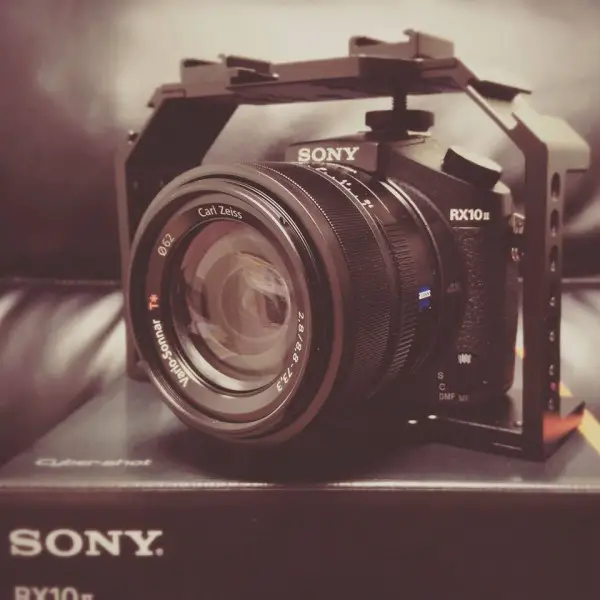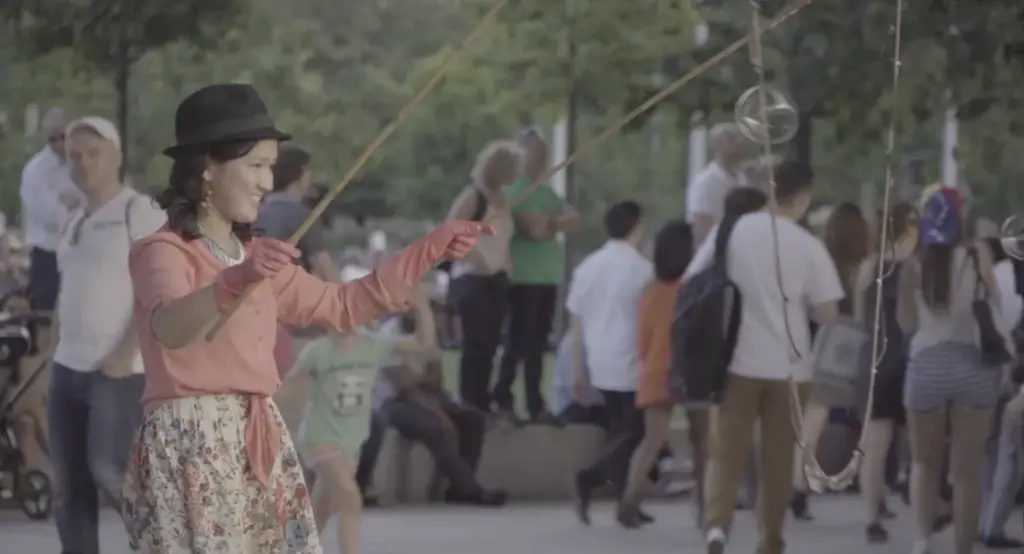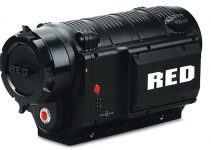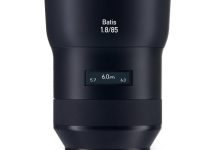Cameras these days come and go. Blink and you’ll probably miss a new camera announcement. But in the over-abundant sea of choice, it’s not easy for manufacturers, especially those with a magnitude of product lines spanning from cheap consumer fare to high-end digital cinema cameras to stand out from the crowd. Having a 4K internal recording feature in a compact/bridge/mirrorless camera by itself is not enough today. Consumers on all levels are becoming a lot more tech savvy and demanding more features such as better low-light performance, faster lenses and high frame rates.
Sony has managed to carve out quite the niche for themselves not just with their full-frame Alpha 7 series, but also with their latest RX10 II and RX100 IV lines. With shorter product cycles and evolving digital sensor technology, Sony kicked it up a notch with their latest back illuminated CMOS sensors in the latest A7R II (full-frame) and smaller 1-inch stacked versions in the smaller RX10 2 and RX100 IV enabling super slow motion on the latter two and giving them internal 4K XAVC-S recording.

My RX10 2 snug fit in my GH4 Honu 2.0 cage.
Quite frankly I admire what Sony are doing at the moment – getting ahead of the competition by giving users more than what is usually expected. Sure, some will say – but it comes a price. Well, consider this – I bought my Sony RX10 II for £1,200 (inc. VAT) in the UK, which is way more than the $1,298 that it sells for in the US, but we always pay more because of imports, VAT and other financial trickeries that I don’t want to get into right now.
The point is – the RX1o II is significantly cheaper than the Canon XC10, which has similar specs – a 1-inch CMOS chip, a fixed lens (although slower, but slightly longer), internal 4K recording and slow-motion (limited to 720p/120). However, the XC10 records 4K onto expensive CFast 2.0 cards, and also costs $2,500! But this post is not about the XC10 vs the RX10 II, although I smell a post like this coming up, as soon as I get my hands on an XC10, which is proving to be very difficult at the moment.
I recently sold my GH4 and bought an RX10 II, yep – I chose a fixed lens body over an interchangeable lens one. The fixed lens on the RX10 II is quite good actually, holding a constant maximum aperture of f/2.8 throughout the 24-200mm (35mm equivalent) zoom range. Sure, it’s not a f/2.8 FF equivalent, but on the 1-inch sensor, it can still deliver pleasing bokeh when shooting at longer focal lengths at f/4.0 or wide open.
Here’s a taste of what 250fps slow-mo looks like on the RX10 II:
Sony RX10 II Slow Motion Rain at 250fps Kholi Cine2/Pro Profile from 4K Shooters on Vimeo.
For the above shots, I used Kholi’s Cine2/Pro PicPro (picture profile) that he developed for the Sony A7s, but as the Sony RX10 II shares all but Cine gamma 3 and 4 with the A7s, as I wanted to try a non-Slog2 picture profile; out of the camera it looked pretty well and should work for situations where I don’t want to shoot S-log2 for a quicker turnaround. My workflow for the above was simply import into Premiere Pro, cut a few shots together, slap a simple S-curve and export. It took me a couple of minutes. There are a few more profile like this one I’d like to try and also possibly modify this one slightly for different environments – exterior daylight, overcast, night etc., but that’s for another post.
As for S-log2, it does give you the maximum dynamic range out of the camera but the trade off is you have to use a minimum ISO is 800, which in daylight exteriors necessitates the use of the built-in ND filter (3 stop) or even more via screw-on ND’s or 4×4 filters in a mattebox, but for this camera I prefer a screw-on filter like the Hoya ProND8 62mm (3 stops) in case I need more ND, but if you use Cine 1 or Cine 2 gamma for example, you can use lower ISO’s.
This past Saturday we had some lovely sunny weather and I took my new RX10 II for a walkabout through some well known bits of London. Here’s a couple of slow motion samples in Slog-2, completely ungraded.
Sony RX10 II Slow Motion 100fps S-Log2 1080p from 4K Shooters on Vimeo.
One of the most awesome features of the RX10 II is the fact that it can shoot 1080p/120 (100fps in PAL) in continuos recording mode, you don’t have to fiddle with the pain of HFR mode as you’d need for the higher frame rates. Somehow, the 1080p/120 was kind of brushed over or not even mentioned in the Sony promos, but it’s one is super useful. One more note about Slog-2 – it can be quite tricky to expose for on the back LCD screen or in the viewfinder. For the shots above I aimed to overexpose by 1.3 to 2.0 stops over the cameras built in meter.
As for the higher frame rates higher than 100/120fps you have to go into the dreaded HFR (high frame rate) mode, which is at least located right after the MOVIE mode on the dial. However, once you put the camera in HFR (and PRESS the Center Pad) you can’t really adjust anything – your exposure, focus and focal length are locked. The camera automatically adjusts your shutter speed and exposure, which is a reason why I was seeing the LCD was giving me a darker exposure when I was shooting 250fps and higher.
However, you do have the ability to adjust your focus, aperture and focal length before you press the middle button (standby mode). I came across this on the shoot, but for me it didn’t work each time, possibly due to the fact I didn’t read the manual and just went for it. This video by Jakub Gorajek shows it better than I can explain it.

RX10 II Slog-2 Frame grab 1080/100fps Ungraded
After a few underexposed shots in 250ps I cranked up the exposure in Movie mode to more than 2 stops over – I can’t see how many exactly as the meter isn’t showing me exact numbers when you hit 2.0 stops and more over – it just says 2.0+. Again, I have to flick back the dial to Movie, adjust my focal length, ISO focus, then flip back to HFR, hit the centre pad and wait for the moment I want to capture in super slow-mo.
I shot only in Quality Priority mode, which buffers only 2 seconds of slow-mo (Shoot priority mode gets you 4 seconds but at lower res), which translates to about 20 seconds in real time when you shoot 240/250fps or a whopping 40 seconds real time in 480/500fps. The quality of 240fps/250fps is really decent and quite usable, although a bit below Full HD, but still very nice at 1824 x 1026. Switch to 500fps and the resolution drops to 1676 x 566 with a lot more moire and aliasing artefacts plus it’s more softer and noisier. Still it can be a lot of fun for web based stuff.
Here’s a clip of the Sony RX10 II at 500fps in Slog-2 Ungraded:
The slow motion capabilities (especially 240fps and 120fps) and the inclusion of Slog-2 were the two main reasons why I switched to the RX10 II from the Panasonic GH4. The more I get to know my new camera and shoot with it, the more I love these features and don’t regret letting go of my GH4, which I did like quite a bit as well.
Stay tuned for the next part in which I’ll go over ergonomics, media cards, accessories and of course 4K recording.
Disclaimer: As an Amazon Associate partner and participant in B&H and Adorama Affiliate programmes, we earn a small comission from each purchase made through the affiliate links listed above at no additional cost to you.
Claim your copy of DAVINCI RESOLVE - SIMPLIFIED COURSE with 50% off! Get Instant Access!





Thanks for the article. I look forward to hearing about your experiences with the S-Log grading. So far I did not really like the skin-tones of the graded Sony Slog (RX10 II) footage I saw on the internet. It seemed like there weren’t enough colors to express the human skin tones or results looked a bit grayish. (desaturated) SLOG grading seems harder than grading non SLOG footage. Agree?
PS: quite a bold move to sell your GH4. Personally I would only use the RX10 II as a B-camera to the GH4, as I do not want to lose the flexibility of shooting with all kinds of lenses, including primes. This is what a currently do with the FZ1000.
Hey Erwin, glad you like it. Slog takes a lot of work and getting used to, but is well worth it. Re- the GH4 – I couldn’t justify keeping both cameras though Plus I am migrating towards Sony, as I plan to get an A7s so the RX10 2 can intercut nicely. I find that having an A and B cam from the same manufacturer, especially in the case of owning an RX10 and Alpha7 series camera, it makes a lot of sense given they all have S-log2 now. Still I do miss the Gh4 already… maybe will give the GH5 a try when it comes out, but it has to be really something to sway me away from what Sony is giving me.
Hey Erwin, glad you like it. Slog takes a lot of work and getting used to, but is well worth it. Re- the GH4 – I couldn’t justify keeping both cameras though Plus I am migrating towards Sony, as I plan to get an A7s so the RX10 2 can intercut nicely. I find that having an A and B cam from the same manufacturer, especially in the case of owning an RX10 and Alpha7 series camera, it makes a lot of sense given they all have S-log2 now. Still I do miss the Gh4 already… maybe will give the GH5 a try when it comes out, but it has to be really something to sway me away from what Sony is giving me.
Very nice! How does the RX10 II compares to the GH4 in terms of low light?
Also i would like to know if you think i could use a 8mm anamorphic adapter to make it a little less “videoish”.
Thank you for this article.
I haven’t tested low light yet so I can’t say. I have a feeling it may be better than the GH4 but thats all irrelevant as the gh4 can take speed boosters and faster lenses. I dont find the images out of the RX10 to be videoish, but yes, you can probably fit a an anamorphic adapter onto it if you feel like going for that look.
in HFR you can actually adjust everything (exposure, focus).
Well, you don’t. You have to first change to Movie mode – expose, adjust your focal length and focus, then flip the dial to HFR , press the center button to go into HFR Standby and then press record. When camera is in HFR standby mode you cant change anything as if you press any custom button or flick the zoom rocker, you get an error message prompting you to press record. It is a bit of a frustrating way to work , but the only way for it.
Nope;) I’ll record video and show you:)
I saw your video thanks. I meant that you can;t change anything while in standby mode right before pressing record – in case anything in your shot or exposure changes – due to clouds or sharp changes of light or anything else. That’s what I meant.
You wrote that you have to go back to Movie mode… which is not true.
i dont know what I did exaclty but the first time I tried it I had to go back to Movie mode. then figured out it can be done before Standby, however on mine didnt work all the time.
I prefer to go back to movie mode as then I have peaking. I just tried it again, and still no peaking. Maybe its a bug.
https://www.4kshooters.net/2015/08/24/sony-rx10-ii-first-impressions-super-slow-mo-s-log2/
the article has been updated. For the record, this didnt work for me all the time when I tried it. Thank you for the video.
Hi guys ! I recently purchased the Rx10 M2 and would like to shoot a continuous slow mo video, NOT the 2 or 4 sec with HFR mode. What are good setting for continuous slow mo ? Thanks